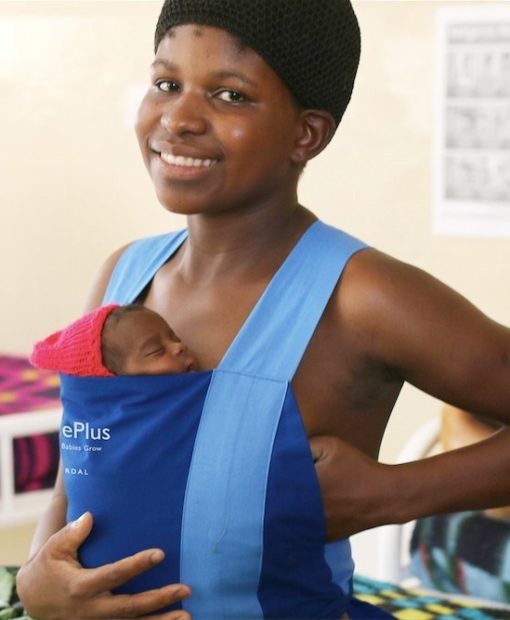Temporarily Turning Blue Sometimes Normal for Babies, Doctors Say
American Academy of Pediatrics refines guideline on what’s called a ‘brief resolved unexplained event’
By Dennis Thompson
HealthDay Reporter

MONDAY, April 25, 2016 (HealthDay News) — It’s a heart-stopping moment experienced by many parents — they discover their baby has turned blue, is breathing irregularly, or won’t respond to a gentle wake-up nudge. Yet, mere seconds later the infant is back to normal.
Fortunately, these events are less dire than one might think. But they’re also more common, an expert panel from the American Academy of Pediatrics (AAP) concluded.
The AAP panel has coined a new term for these events, to reflect the fact that they are rarely associated with a serious underlying medical problem.
The new term, “brief resolved unexplained events” or BRUE, replaces the previous term, “apparent life-threatening events” or ALTE, said Dr. Joel Tieder, lead author of the new AAP clinical practice guideline. Tieder is an associate professor of medicine at Seattle Children’s Hospital.
A BRUE is transient in nature, and has no clear cause, the new guideline said.
BRUE episodes happen in babies younger than 1 year of age when one or more of the following conditions occurs:
•Turning blue or pale,
•Irregular, decreased or halted breathing,
•A marked change in muscle tone,
•Unresponsiveness.
The episode must last less than a minute, and then resolve itself on its own, the panel said.
“Infants probably do these things regularly and we don’t know it,” said Dr. Ian Holzman, chief of newborn medicine at Mount Sinai Hospital in New York City. “I think that’s the gist of it. This is something that’s not a disease, not a sickness. It happens, and you don’t have to get crazy about it.”
Tieder explained that the term ALTE was applied to these events back in the 1980s, when doctors thought they might be precursors to sudden infant death syndrome (SIDS).
But ALTE was poorly defined and led to many children being hospitalized and receiving unnecessary testing, Tieder said. Pediatricians would draw blood, attach EKG wires and order radiation-laden imaging scans, but often found nothing wrong with the child.
“Those tests oftentimes didn’t lead to a diagnosis, and when they did lead to a diagnosis it wasn’t something that wasn’t a treatable diagnosis,” Tieder said. “We really had to ask the question, are we doing more harm for these families than good?”
In addition, research has since determined that these events are not related to SIDS, Tieder added, noting that this finding is very reassuring for parents.
BRUE will be applied to cases based on more tightly defined criteria than those given to ALTE, he said.
Pediatricians can diagnose an event as BRUE only after performing a physical examination and taking a medical history, which is another marked change from the way ALTE was applied, Tieder explained. Doctors often diagnosed ALTE based solely on what they were told by the parent or caregiver.
The truth is, these sort of events just happen to babies, the AAP panel concluded.
Tieder noted a key study that tracked about 1,000 infants over a couple of weeks on home monitors. “When you look at those kids, even the healthy kids, these types of events were quite common,” he said. But, he added, they’re not always seen in the health care setting.
The BRUE episodes are related to things that occur regularly to infants. “Infants don’t come with a manual, and they do things parents wouldn’t expect,” Tieder said.
For example, it’s part of normal infant physiology to stop breathing for brief periods, or to occasionally turn blue at the mouth or feet, he said. Sometimes infants sleep so deeply that they appear unresponsive.
Holzman doesn’t expect any controversy over the new term BRUE, although there may be a short period of “rocky disagreements for what needs to be done for children who are now BRUE.”
The AAP expert panel recommends against subjecting kids with “low-risk” BRUE to hospitalization or testing.
Babies with “high-risk” BRUE are those who:
•Were born premature,
•Are younger than 2 months old,
•Have had repeated BRUE episodes,
•Have had an event that lasted longer than one minute or required CPR from a trained medical professional,
•Had a finding of concern in their physical exam or medical history.
These “high-risk” kids should be given a closer look to make sure nothing’s wrong, Tieder said.
Although the new term is meant to reassure parents, babies should still be examined by a doctor following what appears to be a BRUE episode, Tieder and Holzman said.
“The important part is that the baby otherwise seems fine, but I think it still merits some other person making sure the child is healthy,” Holzman said.
The new AAP clinical guideline was released online April 25 and published in the May print issue of the journal Pediatrics.
More information
Learn more about common conditions in newborns from the American Academy of Pediatrics.
SOURCES: Joel Tieder, M.D., M.P.H., associate professor of medicine, Seattle Children’s Hospital; Ian Holzman, M.D., chief of newborn medicine, Mount Sinai Hospital, New York City; May 2016, Pediatrics

 April 26, 2016
April 26, 2016




 May 19, 2018
May 19, 2018 




